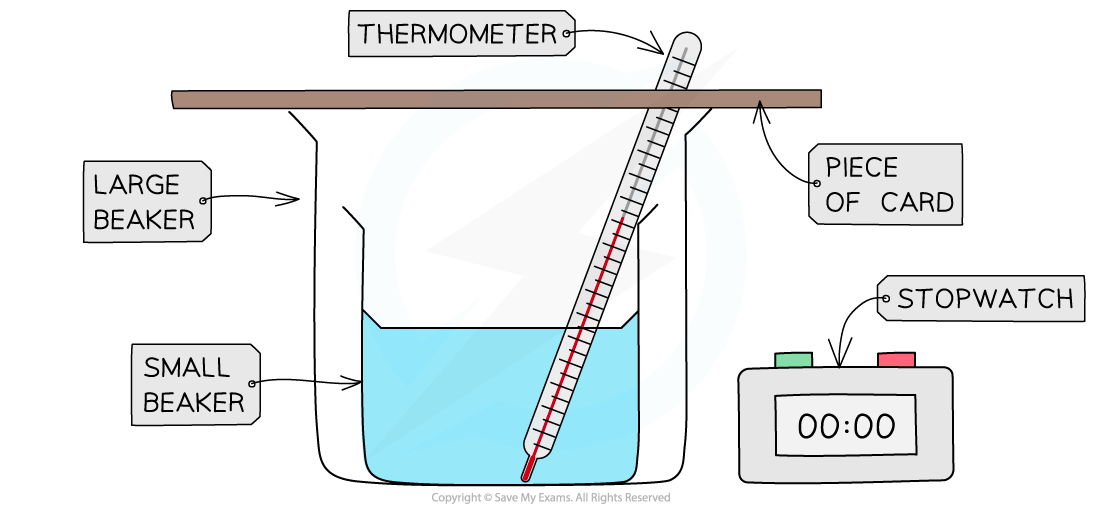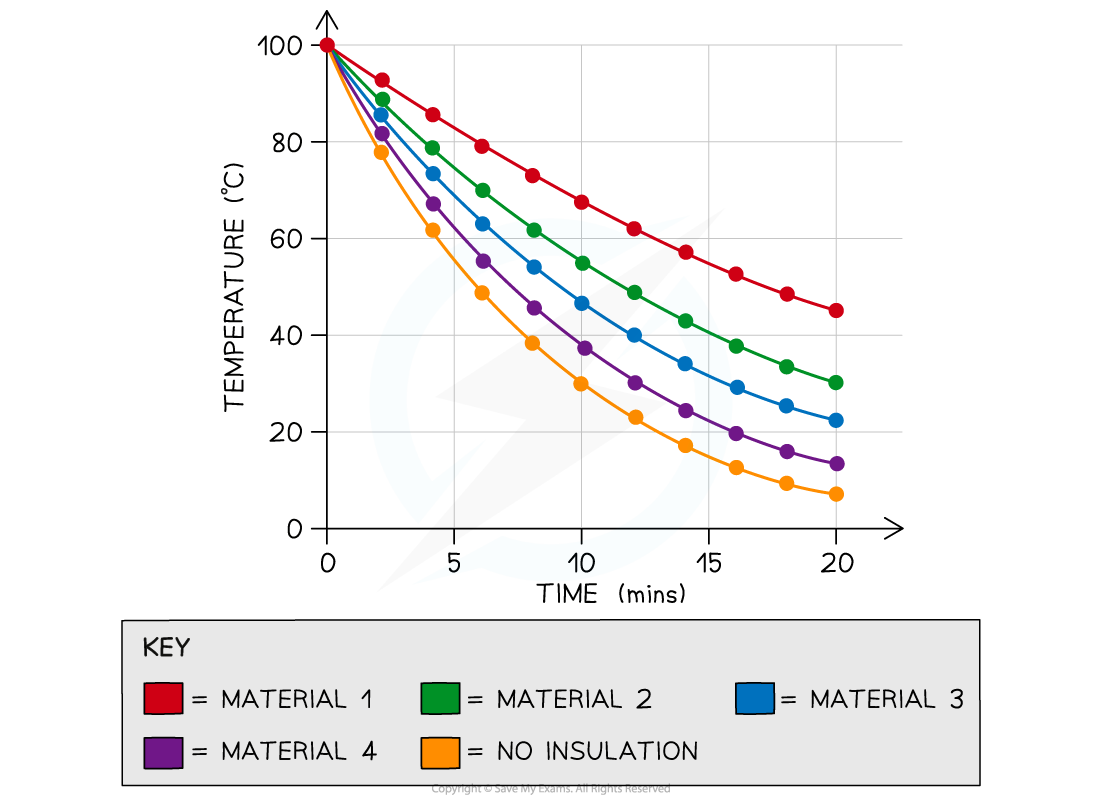Required Practical: Investigating Insulation
1/7
There's no tags or description
Looks like no tags are added yet.
Name | Mastery | Learn | Test | Matching | Spaced |
|---|
No study sessions yet.
8 Terms
Aim
investigate the effectiveness of different materials as thermal insulators
Independent variable
time
dependent variable
temperature
control variable
volume of water
initial temperature of water
thickness of each material
Method
Place a small beaker inside a larger beaker
fill the small beaker with boiling water from a kettle
place a piece of cardboard over the beaker as a lid. It should have a hole for a thermometer and place the thermometer through this hole and into the water in the small beaker
Record the temperature of the water in the small beaker and start the stopwatch
Record the temperature of the water every 2 minutes for 20 minutes, or until the water reaches room temperature
Repeat the experiment with water of the same amount and temperature, each time changing the cardboard for another insulating material and also without any insulation as a control


Analyse the graph
temperature falls quickly at high temperatures, then more slowly, shown by the graph levelling out
at higher temperature there is a greater temperature difference between it and room temperature so greater energy transfer by heating
The shallowest curve shows longest time for temperature to drop
best insulator
Systematic errors
Cover around the beaker with insulator to reduce heat transfer by conduction through the glass
Use a data logger connected to a thermometer for more accurate results
Random errors
Hole not too big to prevent E transfer
Repeat readings- accurate
Read thermometer at eye level to prevent parallax error